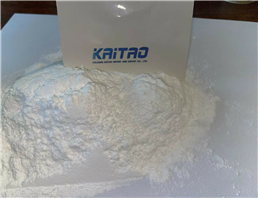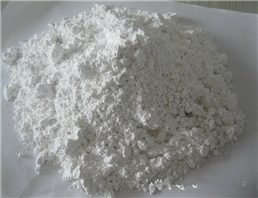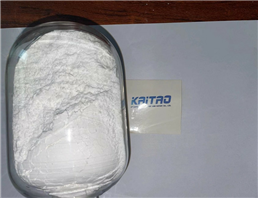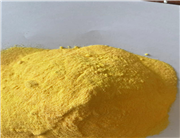The basic information
Chinese name: stanzolol
Chinese alias: Kanglilong
English name: Stanozolol
English alias: Tevabolin; Stanozolol; Winstrol; STANAZOL; Estazol; Anabol; STANOZOL; Stromba;
CAS no. : 10418-03-8
MDL number: MFCD00133084
EINECS no. : 233-894-8
RTECS number: BV8741000
PubChem number: 24899733
Molecular formula: C21H32N2O
Formula:
Molecular weight: 328.49200
Accurate quality: 328.25100
PSA: 48.91000
LogP: 4.11810
Physical and chemical properties
Appearance and properties: white to light yellow powder
Density: 1.129 g/cm3
Melting point: 242 DHS C
Boiling point: 490.8ºC at 760 mmHg
Flash: DHS 250.7 C
Stable at normal temperatures and pressures.
Storage condition: 2-8ºC
Steam pressure: 1.89E-10mmHg at 25°C
Safety information
Danger class code: R63
Safety Instructions: 53-22-36/37/39-36-26
Dangerous Goods Mark: Xn [1]
Molecular structure data
1. Molar refractive index: 95.87
2. Molar volume (cm/mol) : 290.8
3, equal tension specific capacity (90.2K) : 769.1
4. Surface tension (DYNE /cm) : 48.8
Computational chemical data
1. Reference value of hydrophobic parameter Calculation (XlogP) : 4.5
2. Number of hydrogen bond donors: 2
3. Number of hydrogen bond receptors: 2
4. Number of rotatable chemical bonds: 0
5. Polar surface area of topological molecules (TPSA) : 48.9
6. Number of heavy atoms: 24
7, surface charge: 0
8. Complexity: 538
9, isotope atomic number: 0
10. Determine the number of atomic centers: 7
11. Number of uncertain atomic centers: 0
12. Determine the number of chemical bond construction centers: 0
13. Number of uncertain chemical bond centers: 0
14. Number of covalent bond units: 1
use
It is used for chronic wasting diseases, serious diseases and weak emaciation after operation, old age, osteoporosis, children's dysplasia, aplastic anemia, etc. [2]
Pharmacopoeia standard pronunciation
Source (Name), content (potency)
This product is 17-methyl-2 'H-5α -androstere-2-ene -[3, 2-C] pyrazole-17 β -alcohol. The content of C21H32N2O shall not be less than 98.0%.
character
This product is white crystalline powder; Odourless; Slightly wetting.
This product is slightly soluble in ethanol or chloroform, slightly soluble in ethyl acetate or acetone, very slightly soluble in benzene, almost insoluble in water or methanol.
Than the curl
The product was precisely weighed, dissolved in anhydrite ethanol and diluted quantitatively to prepare a solution containing about 20mg per 1mL. The specific curl was determined according to law (Appendix ⅵ E, Part II of Pharmacopoeia, 2010 edition) with a range of +34° to +40°.
To identify
(1) Take about 2mg of the product, add 3ml of p-dimethylaminobenzaldehyde test solution, yellow-green color, uv lamp (365nm) under inspection, yellow-green fluorescence.
(2) The product was dissolved in anhydrous ethanol and diluted into A solution containing about 40μg per 1mL. Uv-visible spectrophotometry (Appendix ⅳ A, Part II of Pharmacopoeia, 2010 edition) was used to determine the maximum absorption at the wavelength of 224nm.
(3) The infrared absorption spectrum of the product should be consistent with that of the control spectrum (Figure 597 in Infrared Spectrum of Medicines).
check
About the material
Take this product, add dichloromethane - anhydrous ethanol (9:1) to dissolve and dilute into a solution containing 10mg per 1mL, as the test solution; A proper amount was taken and diluted with dichloromethane and anhydrous ethanol (9:1) to prepare solutions containing 10μg, 30μg and 50μg per 1mL as serial control solutions. In addition, a solution containing 10mg stanzolol and 0.1mg mesonolone per 1mL was prepared by adding methylene chloride and anhydrous ethanol (9:1) to dissolve and dilute stanzolol and mesonolone as the reference solution. According to the TLC test (Appendix ⅴ B, Part II, Pharmacopoeia 2010 edition), 10μ L of each of the above 5 solutions were absorbed, respectively, onto the same silica gel G thin layer plate, and the mixture of chloromethane-methanol (19: 1) as the developing agent, unfold, dry, spray with 20% sulfuric acid ethanol solution, heat at 100℃ for 10 ~ 15 minutes until the spots are clear, place uv lamp (365nm) for inspection. The reference solution should show two clearly separated spots; If the test solution shows impurity spots, the total amount of impurities should not exceed 2.0% compared with the main spots of the series control solution.
Dry weight loss
Take this product and dry it at 105℃ to constant weight, with weight loss of no more than 1.0% (Appendix ⅷ L, Part II, Pharmacopoeia 2010 edition).
On ignition residue
Not more than 0.1% (Appendix ⅷ N, Part II, 2010 Edition of Pharmacopoeia).
Content determination
Take the dry product about 0.27g, weigh accurately, add 30ml glacial acetic acid to dissolve, cool, add 1 drop of crystal violet indicator solution, titrate with perchloric acid titration solution (0.1mol/L) until the solution turns green, and calibrate the titrated result with blank test. Every 1mL perchloric acid titrant (0.1mol/L) is equivalent to 32.85mg C21H32N2O. [3


 China
China







